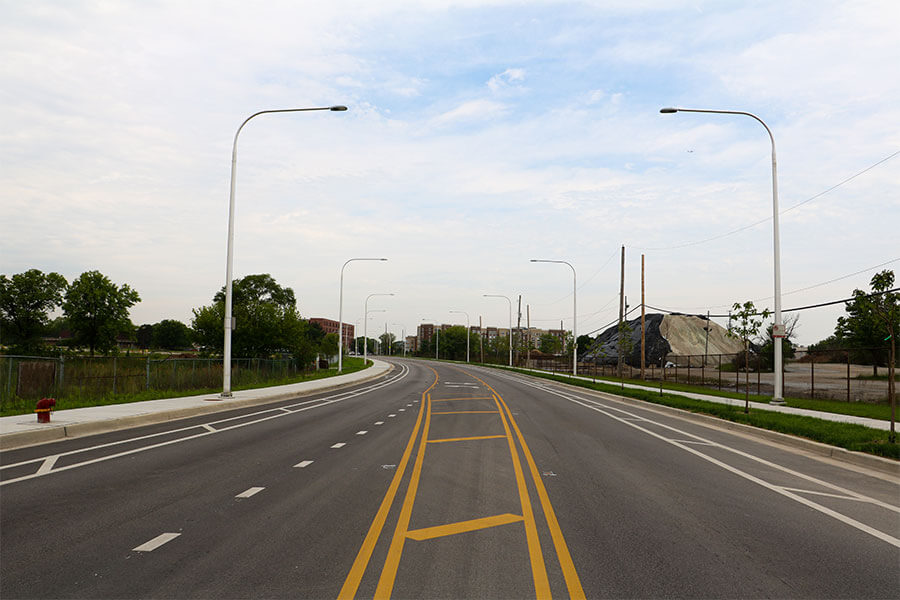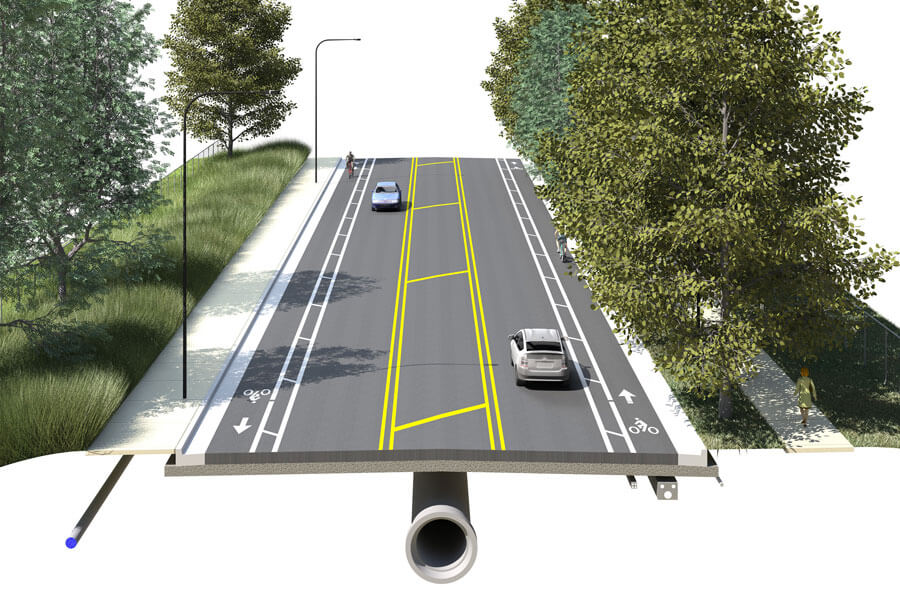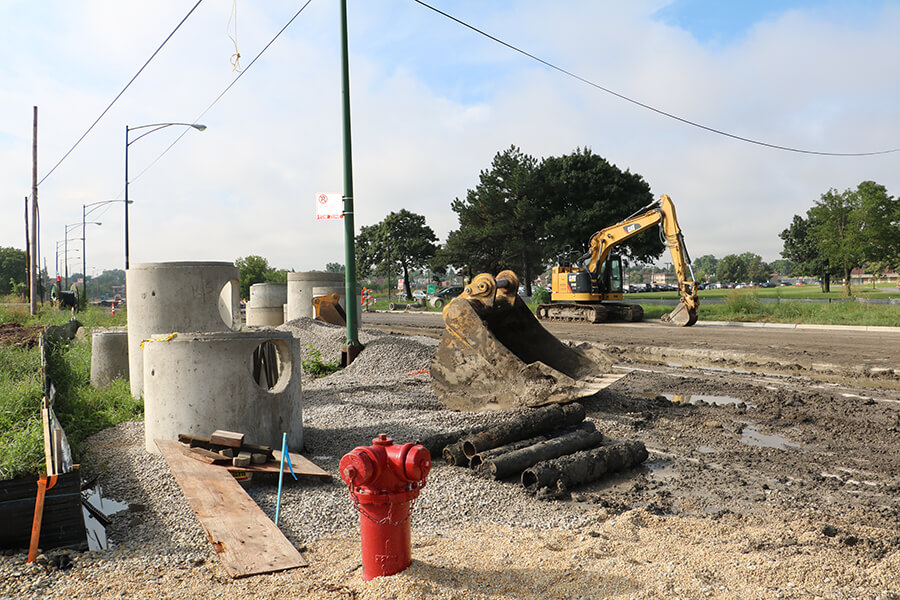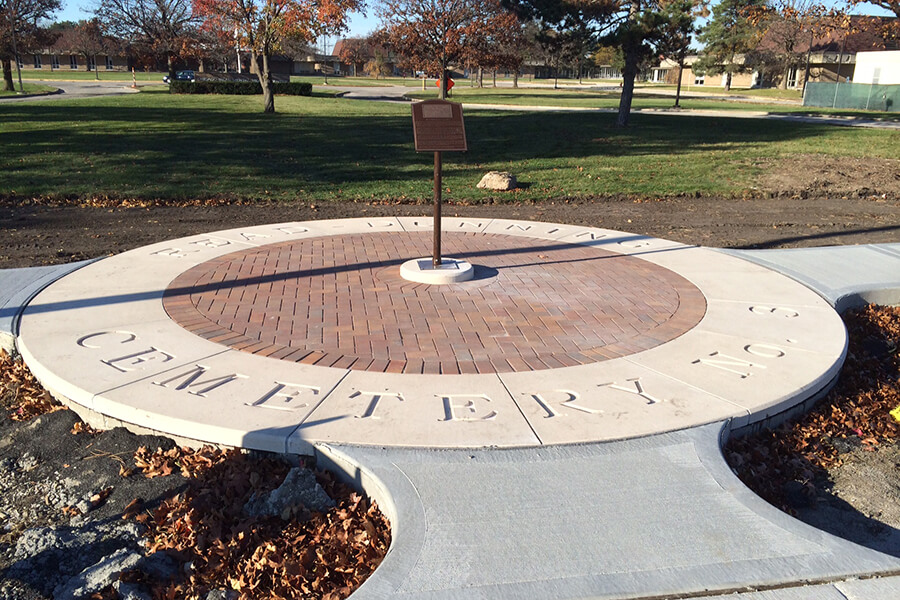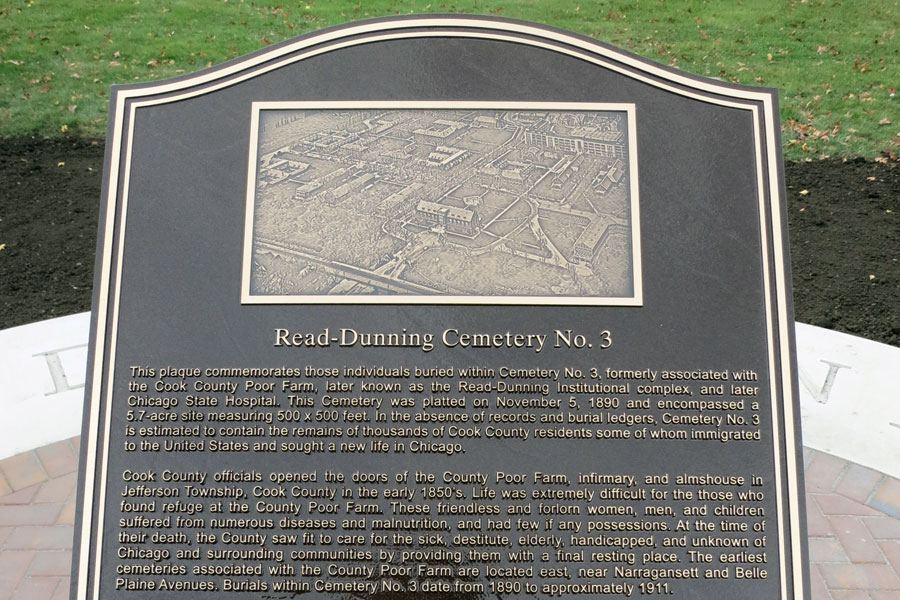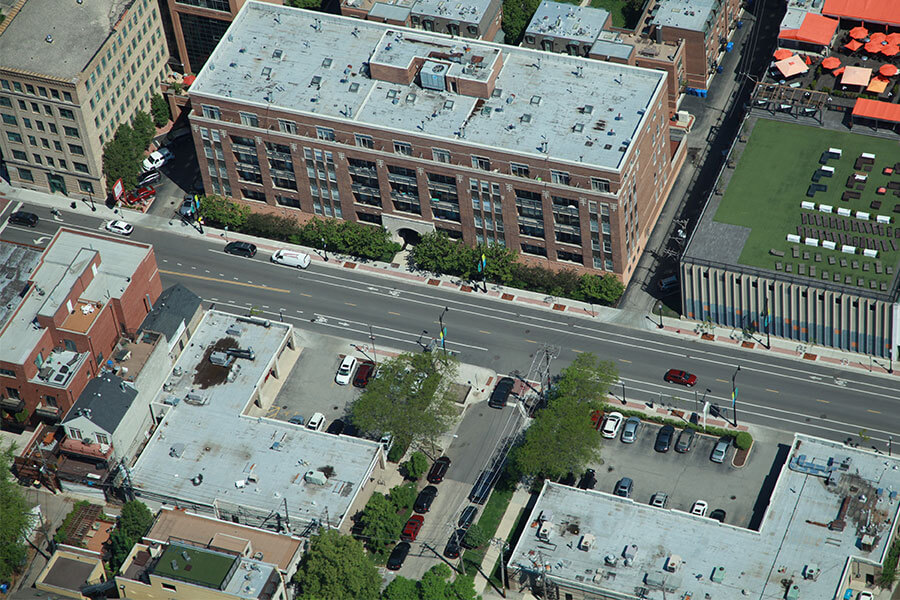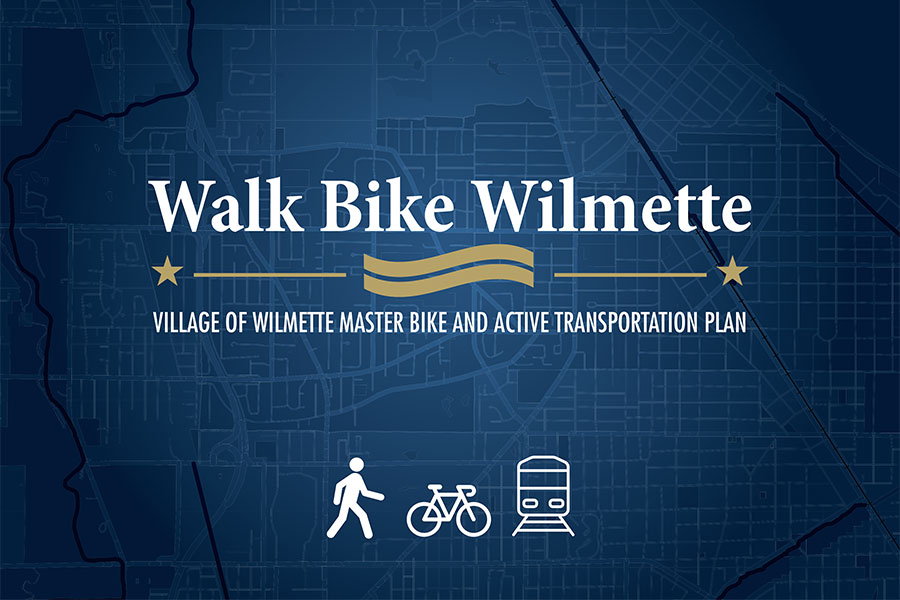Designing with a Complete Streets Approach
This stretch of Oak Park Avenue in the Dunning neighborhood on Chicago’s northwest side is a major collector roadway that provides a link between various residential neighborhoods and unique land uses including the Chicago-Read Mental Health Center, the Autumn Green retirement housing complex, a new Illinois Department of Veteran’s Affairs (IDVA) veterans home, and the future site of a new Chicago Public Schools high school facility. To maximize pedestrian and bicycle accommodations as well as enhancing vehicular mobility, Civiltech applied a Complete Streets design approach to this project.
Click on image to view large.
Click on image to view large.
Creating Robust Bike and Pedestrian Accommodations
The design included reconstruction of the existing road to create a 3-lane roadway with one 10-foot travel lane in each direction and a continuous painted median to accommodate frequent left-turn access to driveways. Six-foot wide on-street bike lanes with 2-foot striped buffers were provided along the sides of the roadway inside of new curb and gutter. To maximize pedestrian accommodations, an 8-foot curb-connected sidewalk was constructed along the western side of Oak Park Avenue and a 6-foot wide sidewalk was construction along the eastern side of the roadway separated by a grass 7-foot parkway. Safety and design were enhanced with a new LED street lighting system.
Flexibility, Responsiveness, and the Unexpected
After Civiltech completed the Phase II plans, specifications, and estimates, and the project was bid, it was discovered that an unmarked Read Dunning cemetery existed underneath the road within the middle portion of the project corridor. Civiltech obtained the specialized archeological services of Louis Berger and McKissack & McKissack to develop a Phase I Archaeological Reconnaissance Survey, avoidance plan, and archaeological monitoring plan to address unanticipated finds during the construction phase. The proposed improvements were also redesigned to avoid excavation within the cemetery limits. Civiltech utilized the same scanning technology and inventory techniques routinely used on vaulted sidewalks to assess abandoned internment locations. The redesign was closely coordinated with IDOT Cultural Resources and the Illinois Historic Preservation Agency. The final design included a decorative plaza with a commemorative plaque recognizing the former cemetery and those who were buried there.
Click on image to view large.
A Uniquely Structured Team for a Uniquely Structured Project
This project was unique in that the roadway is under the maintenance and jurisdiction of IDOT but the improvement was funded entirely with City money. Therefore, an official overall Phase I Study was not required, but many of the same study components and coordination were needed. Civiltech’s strong multi-disciplined team was perfectly suited to smoothly process the Phase I requirements within the Phase II project parameters.
Although the project was processed through IDOT’s permit section, the Bureau of Programming approved the proposed geometrics; the Bureau of Traffic approved the traffic signal modifications; and the Hydraulics Unit approved the design of the new drainage system. Furthermore, excavation in a State right-of-way required that a Preliminary Environmental Site Assessment (PESA) be conducted. Civiltech utilized the subconsultant services of Huff & Huff, Inc. to complete the PESA and Preliminary Site Investigation (PSI) based on Recognized Environmental Conditions (RECs) identified by the site assessment.
The Project Incorporates the Following:
- Complete Streets Design approach
- Flexibility and responsiveness
- Road diet
- On-street buffered bike lanes
- Improved pedestrian facilities
- Improved crosswalks and pedestrian refuge islands
- New curb and gutter
- Improved lighting
- ADA compliance
- Coordination with IDOT cultural resources
- Coordination with the Illinois Historic Preservation Agency
Scope of Services
- Phase II with Phase I Components
- Interagency Coordination
- Roadway and Highway Design
- Bicycle and Pedestrian facility Design
- Traffic Engineering and Impact Studies
- Drainage Design
- Lighting Design
- Traffic Signal Design
Funding:
- Local
Similar Projects

